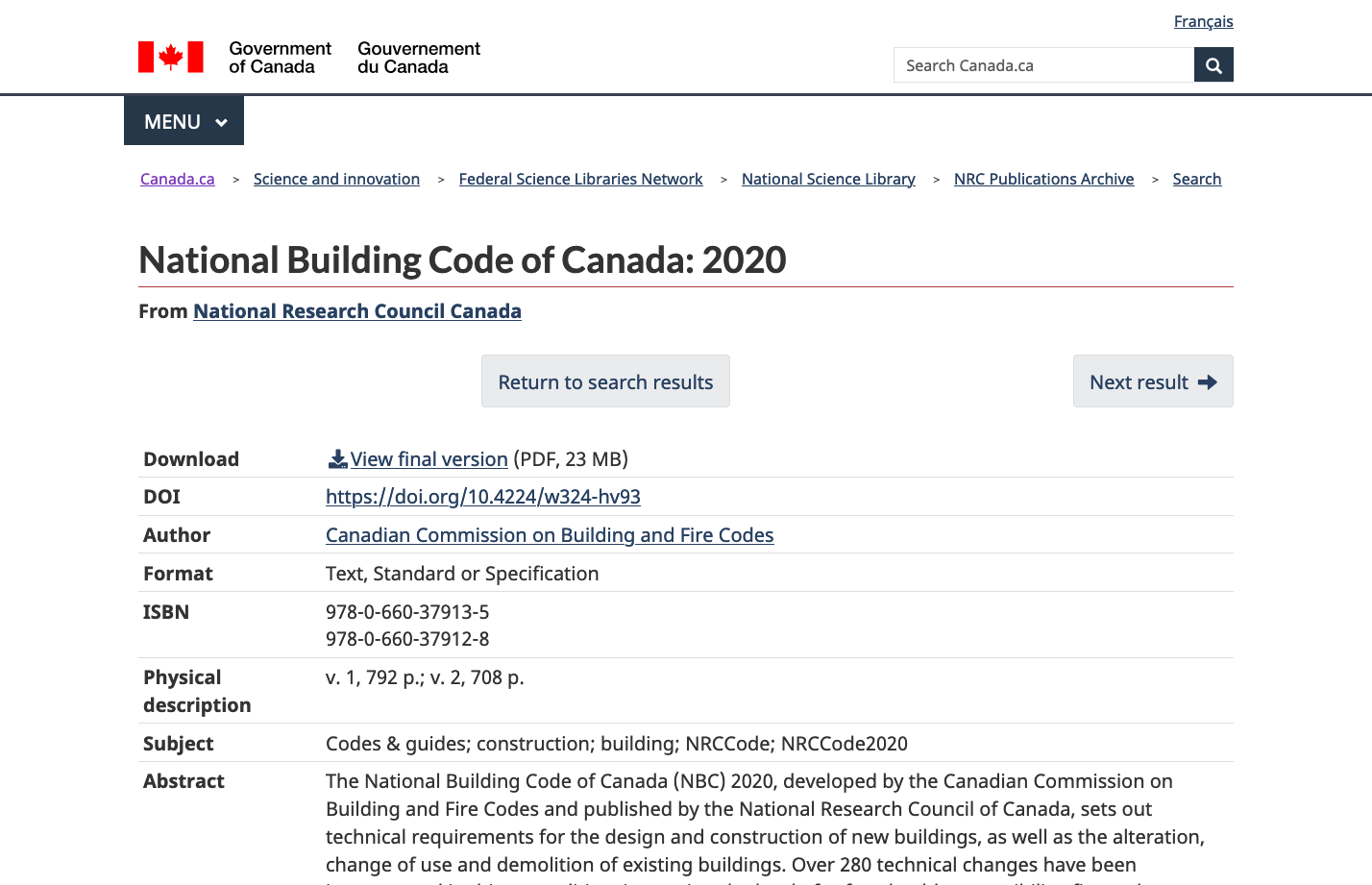
News
Business Intelligence
2020 National Model building code released
March 31, 2022 By Canadian Commission on Building and Fire Codes

The 2020 National Model Codes were released Monday, providing an updated set of model construction codes that will make Canadian homes and buildings safer and more accessible, while responding to climate change. The new Codes include the National Building Code of Canada 2020, the National Fire Code of Canada 2020, the National Plumbing Code of Canada 2020, and the National Energy Code of Canada for Buildings 2020.
 “These new Codes are more reflective of the current world we live in,” said Kevin Griffiths, Chair, Canadian Commission on Building and Fire Codes (CCBFC). “Thanks to these updates, it will be easier for Canadians with accessibility considerations to navigate different spaces; large farm buildings are now included in the Codes to reflect the evolving agricultural sector; and energy performance levels have been introduced to make buildings more energy efficient.”
“These new Codes are more reflective of the current world we live in,” said Kevin Griffiths, Chair, Canadian Commission on Building and Fire Codes (CCBFC). “Thanks to these updates, it will be easier for Canadians with accessibility considerations to navigate different spaces; large farm buildings are now included in the Codes to reflect the evolving agricultural sector; and energy performance levels have been introduced to make buildings more energy efficient.”
Highlights from the new Codes include:
- A clarification that, through certain technical requirements, the existing Fire Safety objective addresses safety of emergency responders including firefighters when performing their duties;
- Strengthened protections for openable windows in residential occupancies to minimize the risk of falling;
- Safety glazing in windows and doors for schools, and similar buildings, to reduce the hazards of wired glass;
- Updates to evaporative equipment and drain pans to minimize the growth and transmission of legionella and other bacteria;
- Adjustments to the minimum dimensions of building elements to accommodate people using a wider variety of mobility devices, and requirements for tactile signage and for more pedestrian entrances and floor levels to be accessible;
- A tiered energy performance compliance path which incrementally improves energy efficiency at each successive tier;
- The introduction of whole-building airtightness testing as an option for complying with air leakage requirements;
- A new home-type care occupancy that will allow for safe and affordable care;
- The introduction of encapsulated mass timber construction to allow for the construction of wood buildings up to 12 storeys tall; and
- The introduction of technical requirements for large farm buildings and addition of new agricultural occupancies.
Code users are invited to download the Codes and review the changes that apply to their work. The 2020 Codes include nearly 400 changes developed through an open, transparent, and consensus-based process that included expert volunteers from across Canada. As part of the development process, the public was given an opportunity to review and comment on all proposed changes before the Codes were finalized. Current provincial and territorial building, fire, plumbing and energy regulations will remain in effect until the 2020 Codes are adopted, with or without modifications, by the provincial or territorial authorities having jurisdiction.
Discussions about the 2025 National Model Codes are already underway. The CCBFC encourages the involvement of industry, general interest and regulatory experts in the process to make sure that the best available knowledge drives meaningful change.
The 2020 Codes are available through the National Research Council of Canada (NRC)’s Publications Archive in a free electronic format for download. To purchase the publications in print format, an order can be placed online through the NRC’s Virtual Store.
The National Model Codes are developed by the CCBFC on a five–year cycle and are published by the NRC.
Print this page